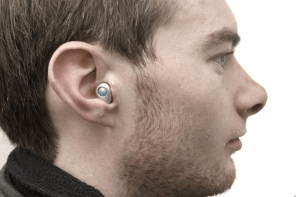Unlocking the Secrets of a Perfect Hearing Aid Fitting
Hearing Aid Fitting
Hearing aid fitting is a crucial step in the process of addressing hearing loss. It involves customizing and adjusting a hearing aid to meet the specific needs of the individual with a hearing impairment. Here are the key steps involved in the hearing aid fitting process:
- Audiological Evaluation: The first step is to undergo a comprehensive audiological evaluation by an audiologist. This evaluation assesses the type and degree of hearing loss, which helps in determining the appropriate type of hearing aid.
- Selecting the Right Hearing Aid: Based on the audiologist’s recommendations and the individual’s preferences, a suitable hearing aid is chosen. There are different types of hearing aids, including behind-the-ear (BTE), in-the-ear (ITE), in-the-canal (ITC), and completely-in-the-canal (CIC) options.
- Customization: In many cases, hearing aids are custom-molded to fit the individual’s ear canal for maximum comfort and effectiveness.
- Programming: Modern hearing aids are digital and can be programmed to match the individual’s specific hearing needs. The audiologist will adjust the settings, considering the person’s audiogram and lifestyle.
- Real-Ear Measurements: Real-ear measurements involve placing a tiny microphone in the ear to measure the actual sound level in the ear canal when the hearing aid is in use. This ensures that the aid is delivering the appropriate amplification.
- Verification and Validation: After programming, the audiologist will verify that the hearing aid settings are optimal using various tests, and the individual’s satisfaction and comfort will be assessed.

- Education and Counseling: The patient receives education on how to use and care for the hearing aids. They also learn how to insert and remove the devices, change batteries, and troubleshoot common issues.
- Follow-Up Appointments: Hearing aid fittings are not a one-time event. Follow-up appointments are necessary to fine-tune settings, make further adjustments, and address any concerns or issues that arise during real-world use.
- Adaptation Period: It may take time to adjust to hearing aids, so the individual should be patient during the adaptation period. The brain needs time to acclimate to the new sounds.
- Regular Maintenance: Routine maintenance is essential to keep the hearing aids functioning optimally. This includes cleaning, changing batteries, and addressing any technical problems.
Hearing aid fitting is a personalized process that aims to maximize the individual’s hearing capabilities while ensuring comfort and ease of use. It’s crucial to work closely with an audiologist or hearing healthcare professional throughout the process to achieve the best possible outcome.
Understanding Hearing Aid Fitting
Hearing loss is a prevalent condition that affects millions of people worldwide. While hearing aids can significantly improve the quality of life for those with hearing impairments, it’s crucial to understand that hearing aid fitting plays a vital role in their effectiveness.
The Importance of Proper Fitting
The hearing aid fitting process is not a one-size-fits-all approach. Each individual’s hearing loss is unique, and a properly fitted hearing aid can make a world of difference in their everyday life. The key importance lies in customization.
The Hearing Aid Fitting Process
Consultation and Assessment
The journey begins with a consultation and assessment. A licensed audiologist will evaluate your hearing loss, discussing your lifestyle, needs, and preferences.
Selection of the Right Device
Based on the assessment, the audiologist will recommend suitable hearing aid options, taking into account factors like style, technology, and budget.
Customization for Individual Needs
Once you choose a hearing aid, it’s time for customization. The device is adjusted to meet your specific hearing requirements, ensuring it’s a perfect match.
Initial Fitting and Calibration
During the initial fitting, the audiologist will program the hearing aid to provide optimal amplification based on your audiogram.
Fine-Tuning for Optimal Results
Over time, your hearing needs may change. Regular follow-up appointments are essential to fine-tune the settings, ensuring your hearing aid always performs at its best.
Benefits of Well-Fitted Hearing Aids
Properly fitted hearing aids come with a host of advantages that extend beyond hearing improvement.
Enhanced Sound Quality
Well-fitted hearing aids deliver clear and natural sound, allowing wearers to enjoy conversations, music, and other auditory experiences.
Improved Comfort and Usage
Customized fitting ensures that the hearing aids are comfortable to wear, even for extended periods, making them a seamless part of daily life.
Social and Emotional Well-being
With improved hearing, individuals can reconnect with loved ones, participate in social activities, and experience enhanced emotional well-being.
Common Issues with Poor Fitting
On the flip side, poorly fitted hearing aids can lead to a range of problems.
Discomfort and Irritation
Ill-fitting hearing aids can cause discomfort, soreness, and even skin irritation, leading to wearers abandoning their devices.
Sound Distortions and Feedback
Inadequate fitting may result in sound distortions, whistling, or feedback issues, which can be frustrating. Don’t Miss to Check Out Our Website: Net World Fusion
Reduced Efficacy
The most significant drawback of a poor fit is the reduced efficacy of the hearing aids, as they can’t effectively address the wearer’s hearing loss.
Conclusion
In summary, hearing aid fitting is a critical step in the journey to improved hearing. Proper fitting ensures that the device is tailored to your specific needs, enhancing sound quality, comfort, and emotional well-being. On the other hand, poorly fitted hearing aids can lead to discomfort, sound issues, and reduced efficacy. To make the most of your hearing aids, consult with a professional audiologist and prioritize the fitting process.
FAQs
- How long does the hearing aid fitting process take?
- The duration varies but typically takes a couple of hours, including consultation and customization.
- Can I adjust my hearing aids at home?
- While some adjustments are possible, it’s advisable to consult with an audiologist for proper fine-tuning.
- What if I experience discomfort with my hearing aids?
- If discomfort persists, consult your audiologist for adjustments or alternative solutions.
- Do all hearing aids require frequent fine-tuning?
- Not necessarily. Some models are self-adjusting, while others may require periodic adjustments.
- Are there any financing options available for hearing aids?
- Many providers offer financing options, and insurance may cover some or all of the cost. Check with your audiologist for details.
